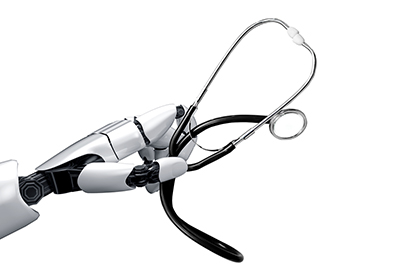 Lately, artificial intelligence (AI) has been outperforming doctors in diagnostics. While scientists need to conduct broader analyses and perfect machine learning systems before they completely take over diagnostics, AI has already overtaken doctors in certain medical subfields.
Lately, artificial intelligence (AI) has been outperforming doctors in diagnostics. While scientists need to conduct broader analyses and perfect machine learning systems before they completely take over diagnostics, AI has already overtaken doctors in certain medical subfields.
For example, machine vision is aiding and replacing doctors in pathology, the medical specialty concerned with diagnosing disease by analyzing blood, urine, and fecal samples. Left to a doctor, this process is timely and inaccurate. Doctors must raise the samples to a microscope and analyze them with their naked eye. While we have trusted this process for decades, it leaves room for human error. But now, AI can study these same blood, urine, and fecal samples accurately, precisely, and quickly.
In another example, scientists are using facial recognition software and machine learning to diagnose rare diseases. These technologies use meticulous facial analysis and deep learning to detect the phenotypes that may otherwise go undetected.
Is AI the Future of Diagnostics?
AI has a few benefits over human diagnosticians. The first benefit is accuracy and precision. AI systems paired with machine learning can diagnose humans without leaving any room for error. This benefit is critical in a time when undiagnosed and misdiagnosed issues lead to countless deaths and billions of dollars of expenses per year.
AI is also notably affordable. Robots don’t need six-figure salaries to do their job. Thus, the healthcare system can save money by employing AI systems in place of diagnosticians. And more important, patients can save money on healthcare.
Finally, AI allows for a quick diagnosis, which is vital for patients who are awaiting a diagnosis of a potentially life-threatening disease. The hurried diagnosis that AI provides also accelerates remedial healthcare processes.
With these benefits, it’s safe to say that AI will overtake doctors in many diagnostic positions. But there’s a catch. Humans don’t want to read a cancer diagnosis on a screen. Impersonal processes are okay, but not when they’re made to deliver life-changing news.
In the coming decades, AI will indeed supplant many doctors. But doctors may stick around to deliver diagnoses and emotional care. Patients should expect collaborative efforts between doctors and AI to hurry diagnostics, improve precision, and drastically reduce the cost of healthcare.
Machine vision is playing a critical role in the future of diagnostics. Learn more on our website today.
